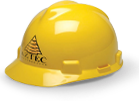The toxic mold environmental risk may be one of the next major real estate “due diligence” concerns, especially in property development areas where major flooding has occurred. The problem is that this not only includes known residential and commercial flood areas incidents, but also numerous minor water releases due to plumbing failures, conductive condensation, house water leaks and accidents. The toxic mold concern could also be a problem where fires occurred at residential properties.
Mold Prevention
The key to mold control is moisture control. It is important to dry all affected water damaged areas and items within 24-48 hours to prevent mold growth. If mold is a problem in your home, contain the mold and get rid of the excess water or moisture. Fix leaky plumbing or other sources of water. Wash and clean off hard surfaces with detergent and water, and dry completely. Absorbent materials (such as ceiling tiles & carpet) that become moldy may have to be replaced. Remember to always first consultant a professional to identify the problem and provide solutions for your drying process and if needed mold abatement. Here at Aztec Construction & Restoration, we offer FREE estimates and consulting throughout this procedure. 877-529-8320 call us today!
- Potential health effects and symptoms associated with mold exposures include allergic reactions, asthma, and other respiratory complaints.
- There is no practical way to eliminate all molds and mold spores in the indoor environment; the way to control indoor mold growth is to control moisture.
- If mold is a problem in your home or school, you must clean up the mold and eliminate sources of moisture.
- Fix the source of the water problem or leak to prevent mold growth.
- Reduce indoor humidity (to 30-60% ) to decrease mold growth by: venting bathrooms, dryers, and other moisture-generating sources to the outside; using air conditioners and de-humidifiers; increasing ventilation; and using exhaust fans whenever cooking, dishwashing, and cleaning.
- Clean and dry any damp or wet building materials and furnishings within 24-48 hours to prevent mold growth.
- Clean mold off hard surfaces with water and detergent, and dry completely. Absorbent materials such as ceiling tiles, that are moldy, may need to be replaced.
- Prevent condensation: Reduce the potential for condensation on cold surfaces (i.e., windows, piping, exterior walls, roof, or floors) by adding insulation.
- In areas where there is a perpetual moisture problem, do not install carpeting (i.e., by drinking fountains, by classroom sinks, or on concrete floors with leaks or frequent condensation).
- 10. Molds can be found almost anywhere; they can grow on virtually any substance, providing moisture is present. There are molds that can grow on wood, paper, carpet, and foods.
Stachybotrys Chartarum (atra) is a greenish-black fungus found worldwide that colonizes particularly well in high-cellulose material, such as straw, hay, wet leaves, dry wall, carpet, wall paper, fiber-board, ceiling tiles, thermal insulation, etc. The fungus (mold), before drying, is wet and slightly slimy to touch. There are about 15 species of Stachybotrys, with a worldwide distribution. The toxic mold grows in areas where the relative humidity is above 55%. This type of fungus does not grow on plastic, vinyl, concrete products, or ceramic tiles. It is not found in the green mold on bread or the black mold on the shower tiles.


